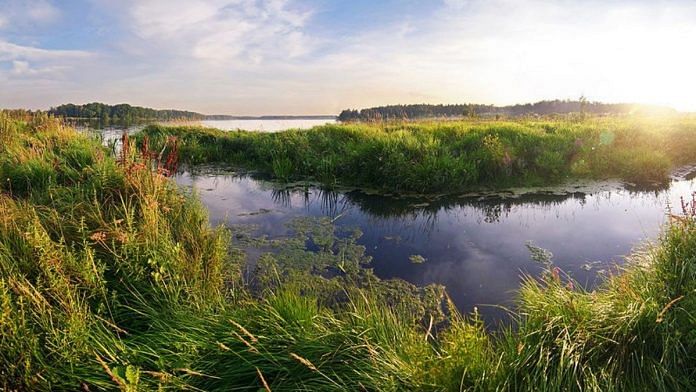
Thank you dear subscribers, we are overwhelmed with your response.
Your Turn is a unique section from ThePrint featuring points of view from its subscribers. If you are a subscriber, have a point of view, please send it to us. If not, do subscribe here: https://theprint.in/subscribe/
Although vital, water in its usable form is scarce, despite its importance and its scarcity, man has exploited and polluted water reservoirs more than any other resource. Availability of water of good quality has thus emerged as a major problem in various parts of the world and the situation is likely to worsen in the future. FAO warns- land and water resources for food and agriculture systems at breaking point.
According to the UN News report- Wetlands are disappearing three times faster than forests and are Earth’s most threatened ecosystem. In just 50 years – since 1970 – 35 percent of the world’s wetlands have evaporated. Human activities that have fuelled this include agriculture, construction, pollution, overfishing and overexploitation of resources; together with invasive species upsetting the balance, and climate change. For the first time, the United Nations celebrated World Wetlands Day, and, a broad definition of wetlands includes ecosystems such as lakes and rivers, underground aquifers, swamps, coral reefs, and many others; but also, human-made artificial sites such as fish ponds or reservoirs, recognizing that these fragile ecosystems make a crucial contribution to biodiversity, climate mitigation, freshwater availability, and economic resilience. The UN Environment Programme (UNEP) study revealed- these ecosystems are also the unsung heroes of the climate crisis, they store more carbon than any other ecosystems, with peatlands alone storing twice as much as all the world’s forests.
ICN report shows that – the intersection of freshwater and climate is a frequently ignored but critical element of the climate problem, according to a new study from Sweden that explores the link and offers solutions that will help lower emissions. The Stockholm Resilience Centre, identifies forest and freshwater wetlands as a crucial depository of carbon. More than 30 percent of estimated global carbon emissions are sequestered in wetlands. So the need to protect and restore them is urgent.
Naturalists and wetland conservationists expressed that the positive attitude of local communities towards wetland values and conservation are essential to the sustainable management and wise use of this resource. There is no better example of this than in the Majuli. Indigenous people, living in the world largest river island – Majuli, Assam, they are good stewards of their biodiversity work. They have deep knowledge about their environments, Protect, and restore ecosystems. The Forest Man of India – Jadav Payeng is the perfect example of how one person can make a big change.
These pieces are being published as they have been received – they have not been edited/fact-checked by ThePrint.
Also read: SubscriberWrites: Understanding stray dogs, being prepared key to reducing attacks on people


COMMENTS